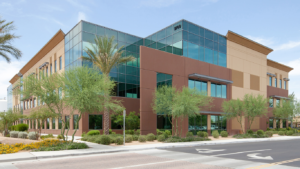The first global report to look at the impact of the Future of Work on real estate and cities over the next three to five years foresees a strong focus on flexibility, demanded by both workers and corporates, not only relating to the work activity but also the space and location. This increased flexibility is likely to lead to a flight to quality over quantity of office space and a move towards flexible and tailor-made leasing models.
For ‘Future of Work 2020: A global real estate players’ point of view’, the Urban Land Institute (ULI) and EY surveyed 555 real estate professionals worldwide. The broad range of respondents included investors, developers, architects, planners and other service providers. The research focused on a time horizon beyond the immediate short-term impact of the COVID-19 pandemic.
Real estate professionals overwhelmingly expect increased remote working, including more home working (96%), more remote working away from the home (72%) and more use of satellite offices at the edge of cities (67%). The resulting ecosystem of workplaces will accelerate a blending of uses between residential, hospitality and office spaces, and a shift in language from ‘office’ to ‘workspace’.
The majority of real estate professionals view that more than 60% of employees may be spending more than 40% of their time working remotely, in comparison to 20% of staff working 20% of their time remotely pre-COVID-19. Nonetheless respondents continue to see a key role for physical office space in creating a corporate culture (96%) and recruiting and retaining employees (93%).
Expected impacts on the real estate industry include increased demand for flexible office footprints (96%), flexible lease contracts (66%) and more widespread use of coworking facilities by large corporate occupiers (60%).
53% of respondents anticipate a decrease in the office space needed by their organization, and only 37% envisaging no change, while increasing the demands for healthy building amenities (94%) and more space designed for collaborative work (81%). This all may lead to a much faster obsolescence of buildings and future significant repurposing of office buildings.
CEO of ULI Europe Lisette van Doorn assesses the impact on the real estate industry of a significant shift in working patterns. “Flexibility is the consistent demand we are hearing. Employees expect it from their employers and corporates from their landlords. Especially over the shorter term this focus is accompanied with a drive by corporates to save costs, as many try to cope with the negative economic impacts deriving from the pandemic.”
“At the same time, there is a strong focus on the quality and location of the physical space as a key element to attract and retain talent and expression of a corporate’s culture. This is also closely connected to an increasing focus on Environmental, Social and Governance both by citizens and corporates. This provides opportunities for real estate players who have embedded these elements in their corporate strategies and buildings, for their branding and to build stronger, longer-lasting relationships with tenants and users.”
According to EY Consulting Associate Partner Vincent Raufast, remote work makes real estate more critical. “While the total office space is likely to decrease, the quality of real estate will be even more critical. The physical office space will play a key role in preventing a loss of corporate culture, less effective talent management, a higher staff turnover and a loss of creativity. It will need to meet new demands including healthy building amenities and more space designed for collaborative work, as well as formal and informal meetings with colleagues.”
The report notes that the impact of the future of work will reach beyond buildings and work activity to communities and cities more broadly. Key changes expected relate to easier access to online public services (93%), the need to develop more efficient local supply chains (92%), less need to commute (91%) and an increasing pressure to focus on social impact, inclusiveness and health for businesses and people (91%).




